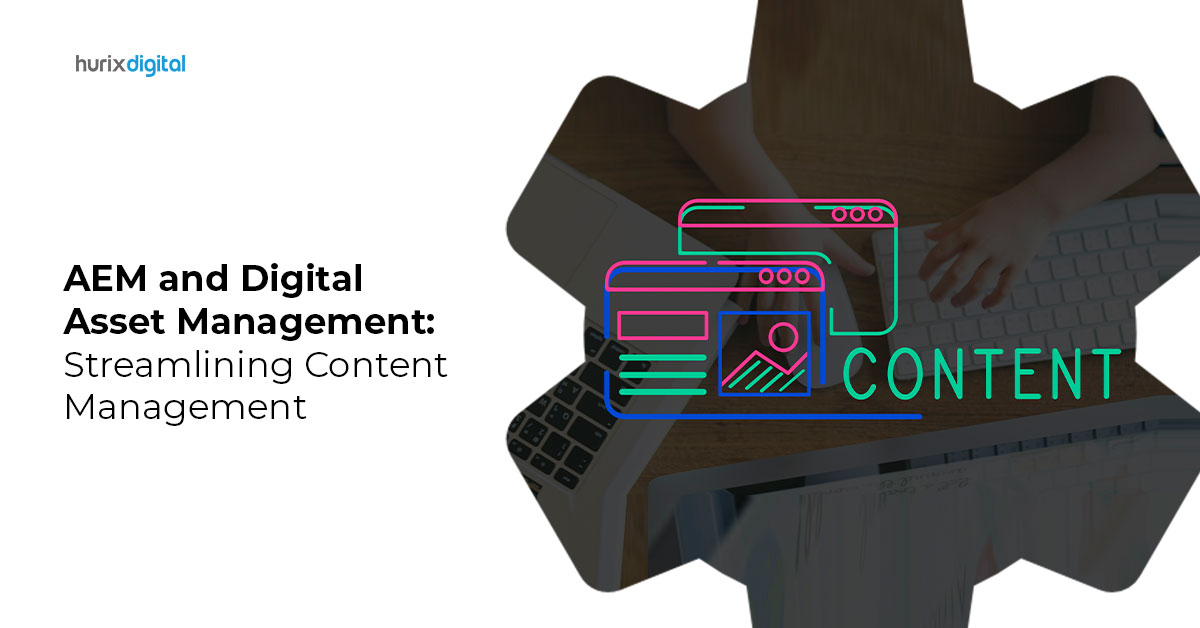AEM and Digital Asset Management: Streamlining Content Management
Today personalized content is the norm to make any digital marketing strategy successful, as studies show that 89% of customers prefer it. Moreover, 80% are more likely to purchase from a business providing a tailored customer experience, and 90% expect a unified shopping experience across all channels.
Digital marketers must create more custom content now than ever before and ensure consistency across all channels, including social media, e-commerce websites, and even in-person retail. This is where the need for good content management becomes paramount. That said, many companies need help tracking their digital assets.
This blog post will explore how Adobe Experience Manager (AEM) and its Digital Asset Management systems (DAMs) can streamline the content management process and improve the efficiency and effectiveness of your digital marketing campaigns.
Table of contents
- What is Digital Asset Management?
- Why is Digital Asset Management Important?
- What are AEM’s Digital Asset Management features?
- How can AEM’s DAM Feature Streamline Content Management?
- Summing it up
What is Digital Asset Management?
Digital Asset Management (DAM) software manages all digital assets valuable to an organization in a centralized system for easy access. Digital Assets include any file that is valuable to an organization. This could be images, videos, infographics, Adobe InDesign or Photoshop files, and so on.
DAMs manage these assets through their existence, i.e., from the moment they are created to the moment they are archived. However, it’s crucial to remember that all DAMs are not created equal. Standard Digital Asset Management systems store assets in isolated systems, resulting in difficulties for teams in locating, managing, and regulating them. That’s where AEM comes in.
AEM stands for Adobe Experience Manager, a comprehensive Content Management System (CMS) offering various features and benefits for digital marketers.
Why is Digital Asset Management Important?
Time and resources are valuable to any organization. Digital Asset Management enables organizations to work with exceptional operational efficiencies by managing and organizing all digital assets. This makes it easy to access and distribute an organization’s digital assets quickly and efficiently.
Some of the key benefits of using a DAM to manage your digital content include:
- Organization: A DAM helps organize digital content so that teams across the organization can access the latest approved files. DAM solutions have an intuitive system to store assets, ensuring no data is lost and duplicate files are deleted.
- Rich Metadata: With digital asset management tools, brands can keep track of their metadata for better tracking and analysis. One of the main benefits of DAM is the speed and ease with which you can search thousands of files.
- Maintain Brand Integrity and Consistency: The unified DAM system ensures that all digital assets and marketing materials will be consistent, up-to-date, and on-brand. This eliminates any use of outdated or low-quality digital assets.
Also Read: AEM Cloud Service: Benefits, Migration, and Best Practices
What are AEM’s Digital Asset Management Features?
AEM is a powerful digital asset management platform that integrates with Adobe Creative Cloud and other Adobe products to provide a seamless and holistic solution for digital content management. AEM content management offers several features and functionalities that simplify the DAM process:
1. Asset Checkout
The asset checkout feature locks an asset in place so that only one person can edit, annotate, and publish it at a time. This feature prevents other users from making changes to the asset while they are working on it, preventing overwrites and loss of effort.
2. Asset Collections
AEM includes an asset collection feature that allows users to group assets, making them easier to find in the long run. Collections are groups of assets that can be created based on any criteria a specific user prefers, such as asset type, date created, or project name. AEM also allows users to share collections with other users so that the assets in the collection can be accessed.
3. Asset Insights
The Asset Insights features provide users with critical data on how specific assets perform. This data can help users identify which assets are most popular, where the assets are being used, and how the assets are performing in different situations. Together this data can be highly beneficial in optimizing asset usage to create more effective marketing campaigns.
4. Brand Portal
The brand portal is a self-service portal that allows users to collaborate with external teams and partners by sharing assets. AEM gives users complete control over how assets are shared. It does this by providing users the ability to control access and the ability to manipulate each asset granularly. This is a useful feature that allows users to easily share digital assets without fear of vital digital assets being misused.
5. Digital Asset Management Workflows
AEM Content Management System’s workflows feature allows users to automate the process of managing their assets. Users can create workflows for planning, designing, reviewing, approving, and publishing assets which can help save time while ensuring that all digital assets are managed consistently.
6. Digital Rights Management
Digital Rights Management is the most useful feature of the AEM Content Management system. The DRM feature gives users control to decide how each asset is used by specifying who can access them, how they can use them, and when their access expires. This feature is critical in protecting an organization’s intellectual property.
7. Version History
The Version History feature tracks every change that is made to an asset. This allows users to revert to a previous version of an asset if necessary. It also helps you track the progress of edits on an asset and ensure that you are working on the most current version.
How can AEM’s DAM Feature Streamline Content Management?
Now that you have a better understanding of AEM’s Digital Asset Management features, you will be able to appreciate how it streamlines content management.
- Centralized and structured storage of digital assets: AEM’s Digital Asset Management Platform enables organizations to centralize and organize their digital assets. Asset collections can easily be retrieved and shared quickly, saving everyone involved considerable time and effort.
- Streamlined workflow automation: AEM allows users to create a customizable workflow that can eliminate all manual intervention, thus reducing bottlenecks and allowing all focus to be on creativity and getting the job done.
- Collaborate and share assets securely: Collaboration is key to working effectively today, between multiple teams within an organization or between organizations. The brand portal, combined with AEM’s digital rights management, allows users to collaborate seamlessly without the fear of any risk to intellectual property.
AEM can be a powerful tool in any industry, such as healthcare, gaming, and e-commerce, and is especially useful for Digital Marketers who often deal with substantial amounts of digital assets.
Check out this Exclusive Press Release: Hurix Digital Joins Adobe Bronze Solution Partnership Program to Enhance AEM Consulting Services
Summing it up
AEM content management features provide a comprehensive CMS Platform for streamlining content management. The importance of digital asset management in today’s personalized, content-driven, omnichannel digital marketing strategies cannot be overstated. AEM Content Management is just the tool you need to streamline the Content Delivery Process.
Transform your online experiences with Hurix’s AEM Services. Create, oversee, and distribute engaging content effortlessly with Adobe Experience Manager’s advanced DAM features.
Our expertise and extensive experience ensure a seamless implementation of AEM, enabling organizations to streamline their content management processes.
Contact Us to know more.

SVP & Head – Hurix Technology Solutions
Global Delivery head with 25 years of working experience in NYC investment banks and fintech companies. Hands-on technology delivery management and program management, accountable for stakeholder relationships, Strategic roadmap, P&L, Revenue growth, Account Management, and employee satisfaction.









